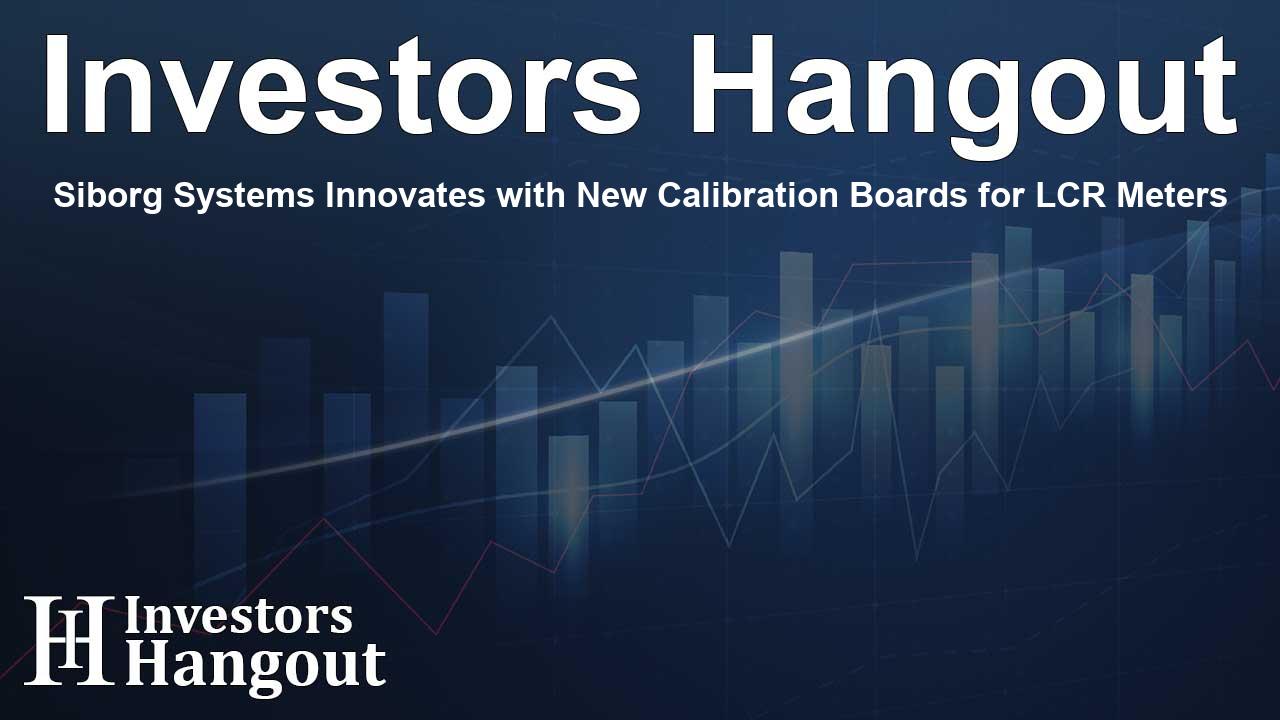Siborg Systems Innovates with New Calibration Boards for LCR Meters

Siborg Systems Enhances Measurement Accuracy with Calibration Boards
Tweezer-style LCR meters have become essential tools for electronic measurement, yet they face challenges when measuring very small capacitances and inductances. The prevalent issue stems from parasitic inductance and capacitance arising from unshielded test leads, which can distort the readings significantly, depending on the distance between the leads and the component size. Siborg Systems has tackled this issue by introducing proprietary calibration fixtures specifically designed to combat these parasitic effects, thereby improving the accuracy and range of measurements.
Evolution of LCR-Meters and Addressing Measurement Limits
Since the launch of the pioneering Smart Tweezers LCR meter in 2005, the market has seen numerous advances in tweezer-style meters. The evolution has brought models with higher frequencies, enhanced accuracy, and upgraded functionalities. Notably, the LCR-Reader line, which includes models like the MPA, R2, and R3, significantly augments the capabilities offered by traditional tweezer-based multimeters.
Challenges with Existing Tweezer Meters
Despite the technological advances, many of these meters share similar designs, which continue to limit performance when it comes to measuring low capacitance and inductance levels. Parasitic effects greatly impact the accuracy of these measurements if not adequately addressed. This has led Siborg Systems to emphasize the importance of calibration in their recent publications, particularly in IEEE forums.
The Significance of Calibration
Recent demonstrations using high-precision benchtop LCR meters illustrated that without proper calibration, particularly for inductances below 10 nH, the relative errors could exceed 100%. This practice is pivotal for tweezer-style LCR meters, whereby utilizing the right calibration methods can dramatically enhance measurement reliability.
Proprietary Calibration Solutions by Siborg Systems
Siborg's introduction of proprietary Short and Open Calibration Boards aims to dramatically reduce offsets encountered during measurements. When used correctly, these boards can help achieve offsets of under 0.01 pF for capacitance and 1 nH for inductance. The design features dummy PCBs with strategically placed holes that simulate various component sizes, allowing for true readings when measured with duly calibrated test leads.
How to Achieve Accurate Measurements
For users of the LCR-Reader models, performing an Open/Short calibration is straightforward. Once connected to the Calibration Board, initiating calibration is as easy as pressing the joystick until confirmation beeps are heard. However, users must maintain consistent pressure on the tweezer handles, as fluctuations can introduce variations in measurements of up to 0.005 pF and 0.5 nH.
Commitment to Innovation in Electronics Measurement
Since its inception, Siborg Systems has been at the forefront of innovation in the electronics industry. The commitment to improving measurement accuracy has led to milestones like maintaining an accuracy of 0.1% and a test frequency of up to 250 kHz. This evolution has positioned the LCR-Reader family of products as leaders in precision electronic testing.
Versatile Applications for Extremely Small Measurements
The LCR-Reader models, including the award-winning MPA, R2, and R3, enable users to measure capacitance and inductance below 1 pF and 10 nH. Tasks that would typically require expensive benchtop meters can now be performed quickly, allowing electronics professionals to obtain reliable data in less than a minute and at a fraction of the conventional cost.
Frequently Asked Questions
What are the main challenges faced by tweezer-style LCR meters?
The main challenges involve parasitic inductance and capacitance from unshielded test leads, which can distort readings when measuring small capacitance and inductance.
How do Siborg's calibration boards improve measurement accuracy?
Siborg's proprietary Short and Open Calibration Boards significantly reduce measurement offsets, allowing for more accurate readings of capacitance and inductance.
Can calibration boards be used with all LCR meters?
These calibration boards are specifically designed to enhance the accuracy of Siborg's LCR-Reader models, including MPA, R2, and R3.
How does calibration affect measurement results?
Proper calibration minimizes errors during measurement. Without it, the readings can be highly inaccurate, especially for low values.
What is the future of Siborg Systems in electronic measurement?
Siborg Systems plans to continue innovating in the field, focusing on enhancing measurement technologies and providing tools that simplify and improve electronic testing.
About The Author
Contact Dominic Sanders privately here. Or send an email with ATTN: Dominic Sanders as the subject to contact@investorshangout.com.
About Investors Hangout
Investors Hangout is a leading online stock forum for financial discussion and learning, offering a wide range of free tools and resources. It draws in traders of all levels, who exchange market knowledge, investigate trading tactics, and keep an eye on industry developments in real time. Featuring financial articles, stock message boards, quotes, charts, company profiles, and live news updates. Through cooperative learning and a wealth of informational resources, it helps users from novices creating their first portfolios to experts honing their techniques. Join Investors Hangout today: https://investorshangout.com/
The content of this article is based on factual, publicly available information and does not represent legal, financial, or investment advice. Investors Hangout does not offer financial advice, and the author is not a licensed financial advisor. Consult a qualified advisor before making any financial or investment decisions based on this article. This article should not be considered advice to purchase, sell, or hold any securities or other investments. If any of the material provided here is inaccurate, please contact us for corrections.
